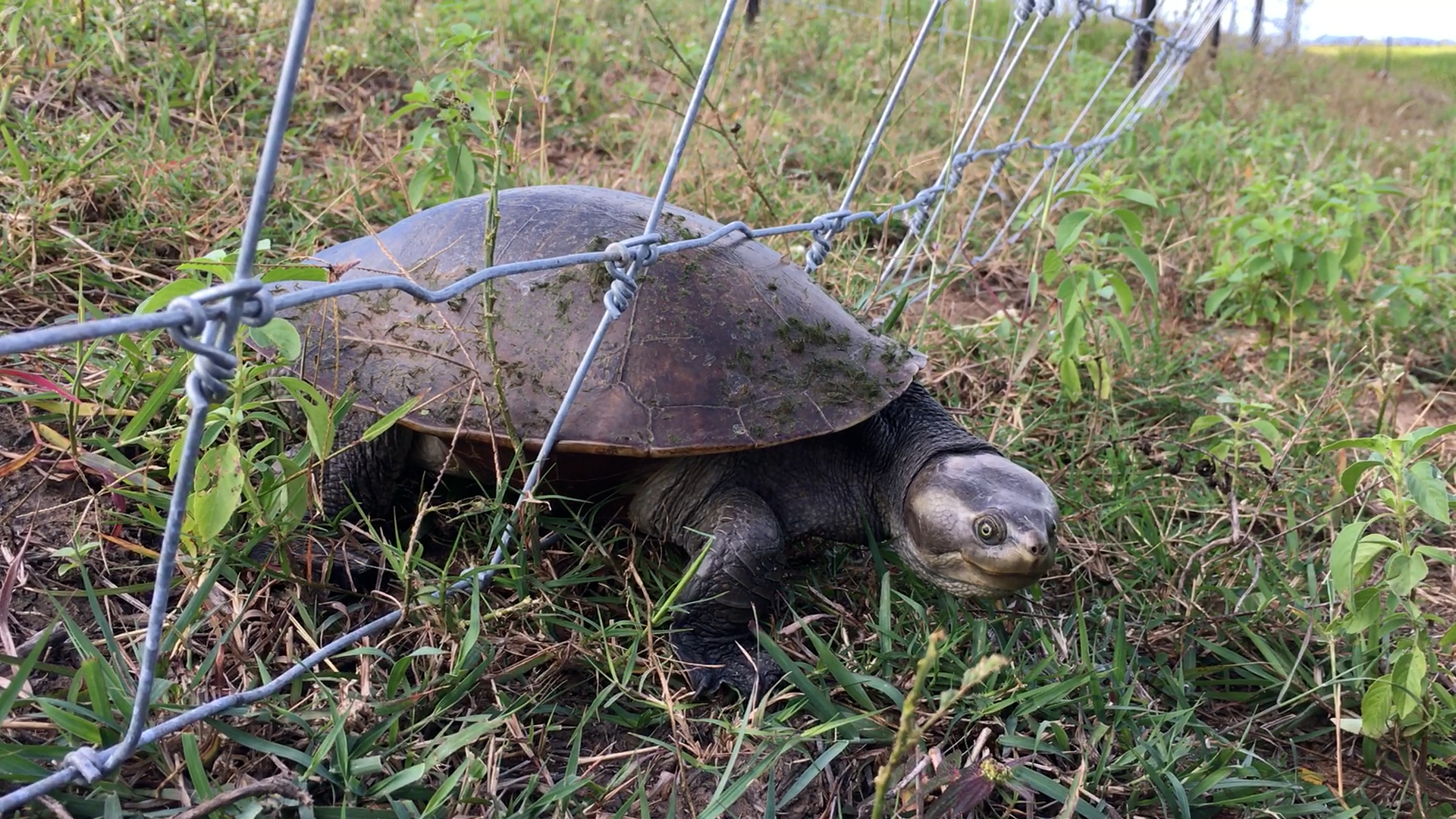12 April 2022
Native freshwater turtles have been caught in the battle to keep feral pigs out of coastal wetlands, with many adult turtles becoming fatally trapped by fences.
See more on TropWATER’s website.
But now, scientists and Traditional Owners on Cape York Peninsula have found it’s possible to keep the destructive pests out and give turtles safe passage to move between water bodies during critical lifecycle periods.
It’s called a ‘turtle gate’ and any freshwater floodplain fence can be modified to include it by removing a small section of wire, with little more than a pair of pliers.

A turtle gate allows turtles to move in and out of wetland areas while still keeping feral pigs out. Photo Nathan Waltham.
The research, led by James Cook University’s Centre for Tropical Water and Aquatic Ecosystem Research (TropWATER), shows the modifications can be made to the most common exclusion fences used in Australia.
TropWATER Principal Researcher Dr Nathan Waltham said many inland wetlands tend to dry out entirely in the dry season, resulting in the migration of freshwater species.
These freshwater turtles need to make the very slow journey across land, from one wetland to another waterhole. In cases where fences have been built around wetlands to protect them from feral animals, we found many turtles simply became stuck either inside or outside of the wetlands. Without being able to move to another river or creek, turtles would often not survive either because of dehydration or from starvation.
– Dr Nathan Waltham, TropWATER
The research showed any freshwater turtle with a shell width greater than the diagonal wire gap would likely become trapped, limiting their ability to access nesting sites, other waterholes, mates and food.
“These turtle gates are a fast and cost-effective solution, which could be included by landholders or local rangers,” Dr Waltham said.
The research was funded by the Australian Government’s National Environmental Science Program through the Northern Australia Environmental Resources Hub.
North Australian Indigenous Land and Sea Management Alliance Research Manager Dr Justin Perry said feral pigs were the worst invasive mammal in Australia and managing the feral animals was a “hard balance” to get right.
Pigs can contaminate water sources and quickly destroy a wetland in just a few days, decimating crucial habitats for native plants and animals. Fences are a common management solution and our project partners on Cape York, Aak Puul Ngantam (APN) and Kalan Enterprises, have been using fences to protect wetlands for many years. We know that well maintained fences do a good job at keeping pigs out, but we need to take into account what these exclusion fences could be doing to native species. These small modifications could save many turtles already caught in challenging floodplain environments.
– Dr Justin Perry, NAILSMA
The study simple fence modification increases land movement prospects for freshwater turtles on floodplains was published in Wildlife Biology, authored by Nathan Waltham, Jason Schaffer, Sophie Walker, Justin Perry and Eric Nordberg.
Want to know more about the Resilient Landscapes Hub's activities and our research into practical solutions to environmental problems? Stay informed about activities, research, publications, events and more through the Hub newsletter.
"*" indicates required fields